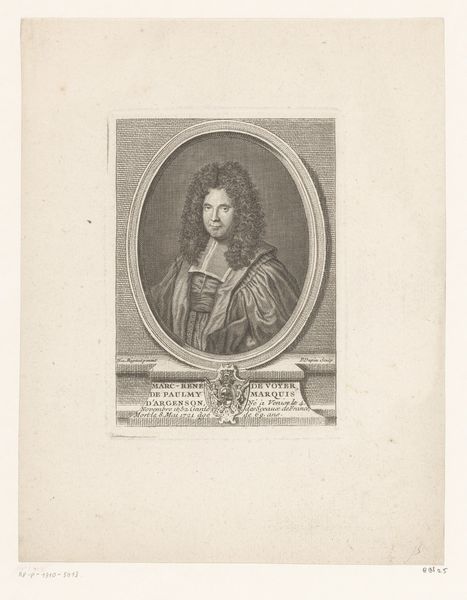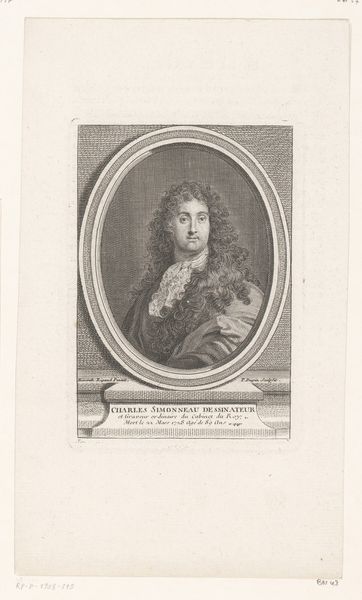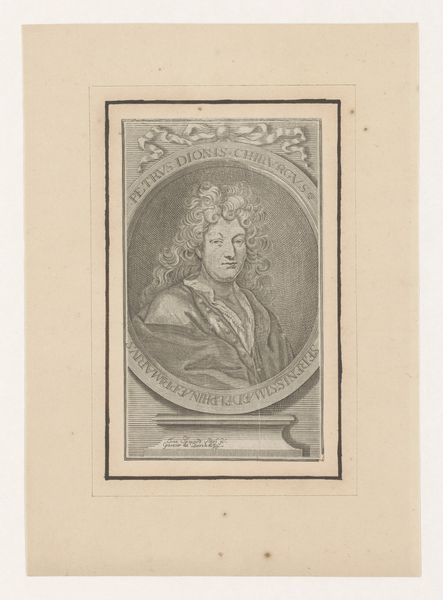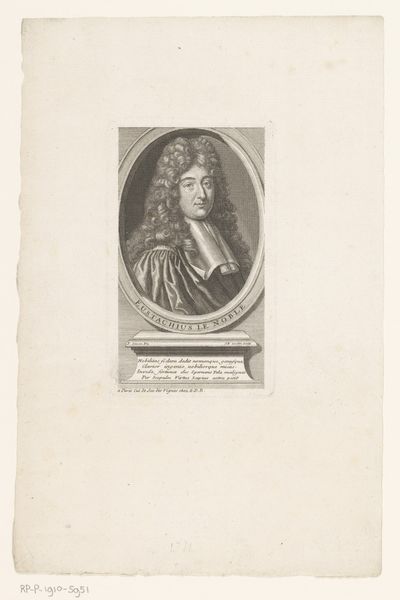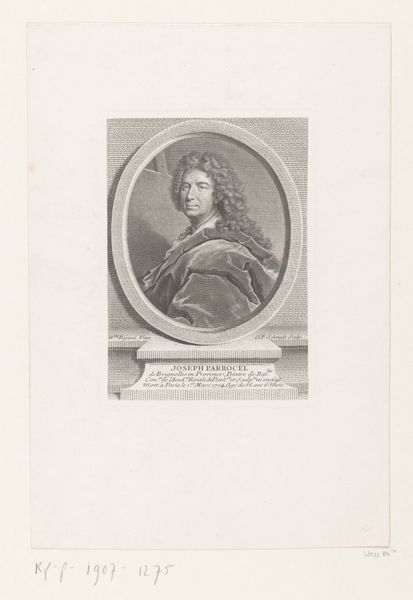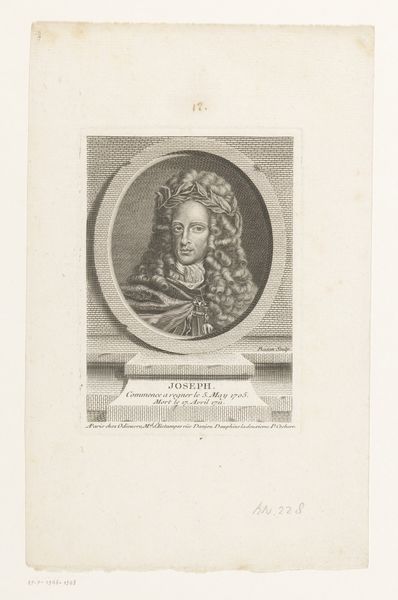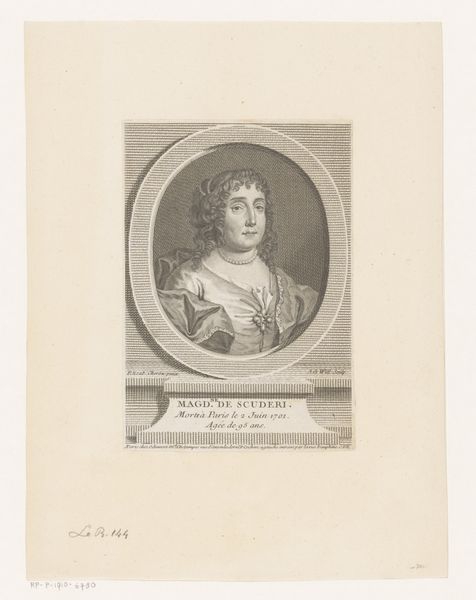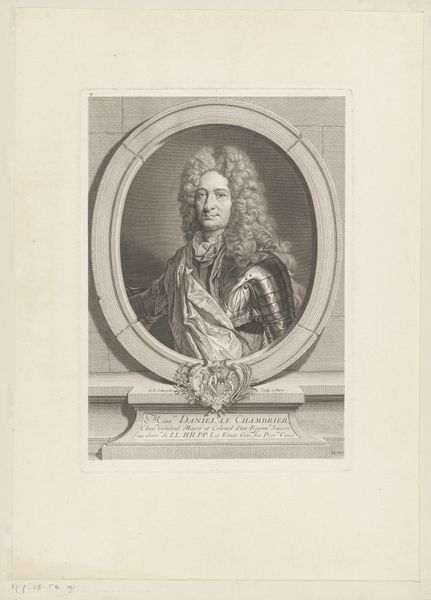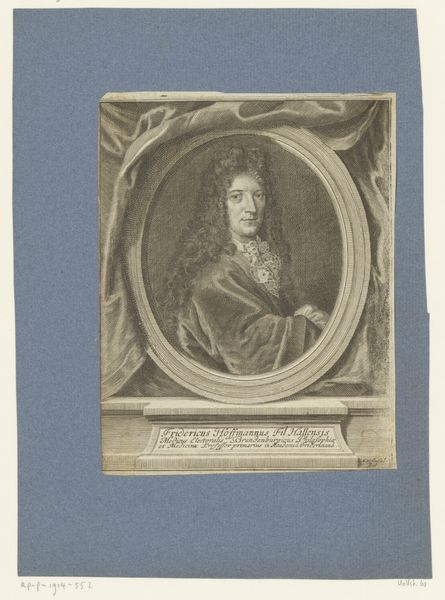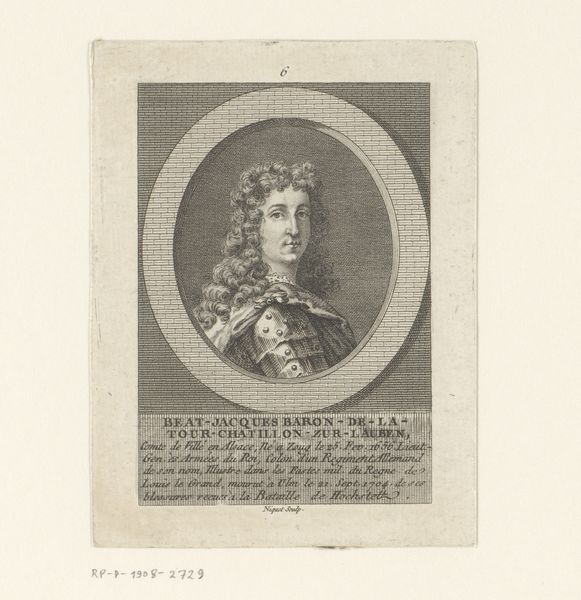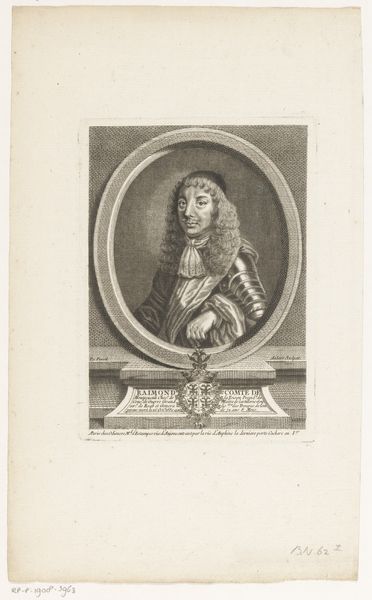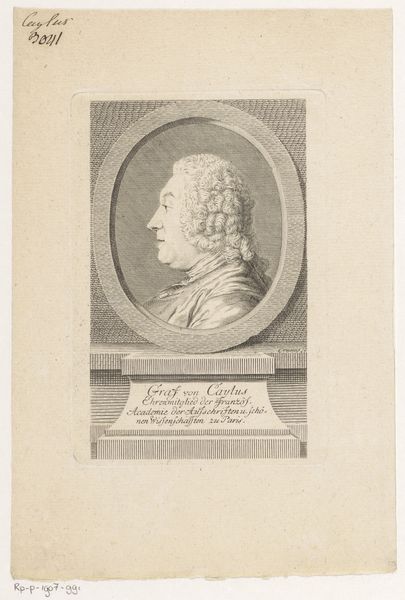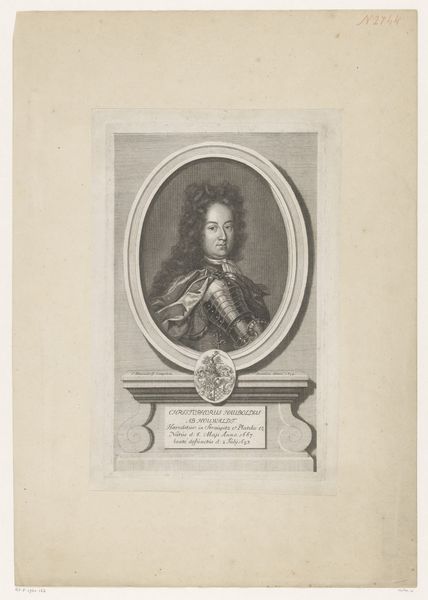
print, engraving
#
portrait
#
baroque
# print
#
old engraving style
#
geometric
#
history-painting
#
engraving
Dimensions: height 149 mm, width 105 mm
Copyright: Rijks Museum: Open Domain
Curator: Welcome! Here we have Etienne Ficquet's 1744 engraving, a "Portret van Hyacinthe Rigaud." This print, now residing in the Rijksmuseum, captures Rigaud, a prominent figure in the art world of his time. Editor: My first impression is of remarkable intricacy. The line work creates an incredible sense of texture, particularly in the hair. The monochrome palette emphasizes form and detail with subtle light modulations. Curator: Indeed. Ficquet’s choice of engraving as a medium is critical. The technique allows for the wide distribution of Rigaud’s likeness, thus cementing his position in the public's perception as a leading artist. The portrait also reinforces ideas surrounding artistic genius, a powerful concept at the time. Editor: Observe the way Ficquet used the oval frame as a visual anchor, almost trapping Rigaud in this idealized form. His gaze, though, confronts the viewer, which makes for a fascinating visual paradox. The use of line emphasizes form, leading your eyes around his flamboyant attire. Curator: Consider also the inscription at the bottom, listing Rigaud's titles and honors. These inscriptions weren't merely descriptive; they were actively constructing his image and emphasizing his status. Printmaking played a significant role in promoting artistic careers and disseminating cultural values in the Baroque era. Editor: I can see the connection. Now I see, by reducing Rigaud to these clear, constructed lines, the print speaks to permanence. Yet that level of detail gives so much nuance; the folds in the fabric, the expression in his eyes – these are more prominent than what one might expect from such a mechanically reproduced image. Curator: Absolutely, it is a fusion of status and artistry perfectly fitted into a specific social moment! It tells the story of the institutional shaping of artistic greatness. Editor: Ultimately, whether you focus on its technique or its role, it shows that great art can reflect historical position through artistic practice.
Comments
No comments
Be the first to comment and join the conversation on the ultimate creative platform.
